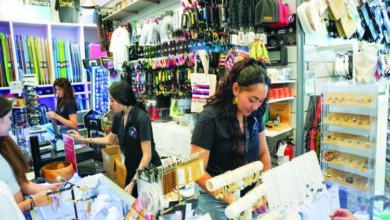Lahaina Was Grappling With Rising Inequality Before The Fires

Lahaina on the eve of the Aug. 8 fires was a community of extremes. A place where business was booming and people were struggling to survive.
At a time when the overall state population had been shrinking slightly, Lahaina was growing. Tourism, though not back to pre-pandemic levels, was on the upswing. Unemployment rates were low.
But while hotel rooms in West Maui were renting for an average of $656 a night, the people who cleaned those rooms and welcomed tourists to the area were working multiple jobs to make ends meet. The median per-capita income in Lahaina was less than $31,000 a year.


There was a sense, at least anecdotally, that more and more wealthy retirees from the mainland were moving to the area. Around 17% of properties in the fire-affected area were used for short-term rentals — triple the state average. Inflation was hitting workers hard.
“You had a widening gap between the haves and the have nots,” said state Sen. Angus McKelvey, who grew up in Lahaina and was first elected to represent the area as a House lawmaker in 2006. “The middle class was getting squeezed out.”
Yet for all the economic pressure being placed on locals and a growing sense of displacement, Lahaina was a place where residents had managed to hang on to a close sense of community.
“Respect whether you are from here or not, is what was given prior to the fire,” said Kaliko Storer, a Hawaiian cultural trainer and Lahaina resident who was recently tapped for the mayor’s advisory team on recovery efforts.
A Community Of Immigrants
Lahaina was home to one of two public Hawaiian language immersion schools on Maui. It had a growing community of Olelo Hawaii speakers, and plans were in the works for a major expansion of homes for Native Hawaiians at the Villages of Leialii, a Department of Hawaiian Home Lands development on the north side of town.
But as in much of Maui County, the Native Hawaiian community in Lahaina was a minority.
Nearly 13,000 people called Lahaina home in 2020. Less than 11% of them were Native Hawaiian, according to census data, though that figure doesn’t capture the number of people who recorded themselves as part-Hawaiian. About 19% of people in the community were multiracial.
The majority of people living in the town were Asian, with the Filipino community — including people of Filipino ancestry whose families had lived on Maui for generations and Filipino immigrants who had yet to achieve citizenship — making up the largest share of residents by far.
About a quarter of people living in Lahaina were white.
Like much of Hawaii, Lahaina had been through a dramatic transformation in recent generations. When Storer was growing up in Lahaina in the 1980s and ‘90s, the community was still a tight-knit plantation village. A place, Storer said, where all the families knew each other.
That started to change in the ’90s and 2000s, as the sugar and pineapple industries shriveled and the area completed its economic pivot to tourism.
In the 2000s, much of the demographic change was driven by people moving to Lahaina from other states, most notably California. All told, the area’s population grew 40% between 2000 and 2020.
By 2021, only 42% of Lahaina residents had been born in Hawaii.
Though there is a constant churn of residents moving to and from the mainland, Lahaina is notably an immigrant community. Nearly one in three people in Lahaina was born outside of the United States — more than twice the state average. More than a third of households spoke a language other than English at home. About half of people in those households told census takers that they spoke English “less than very well.”
While most of the area’s foreign-born residents were from the Philippines, the area was also home to a small but growing Mexican community. Around 5% of the population of Lahaina spoke Spanish at home. The Micronesian community had also grown significantly in the last five years.
Despite the area’s high cost of living, the plethora of open jobs in the tourism industry continued to pull immigrants to the region. The number of jobs in West Maui outnumbered the available workers living in the region by 2 to 1.
In 2015, 84% of jobs in West Maui were in the service industry, according to county reports. Recent census data showed that more than 50% of Lahaina workers commuted to jobs in the Kaanapali resort area.
Pooling Resources
The increase in population in the last two decades came with issues of overcrowding and a significant housing shortage. One of Lahaina’s census blocks — along Lahainaluna Road — had one of the highest population densities on Maui, on par with parts of urban Honolulu.
Just over half the people living in Lahaina were renters — a far higher percentage than the state average. Houses in the area also tended to be slightly older than in the rest of the state, which helped create pockets of relatively affordable housing.
The fact that a majority of people living in the town were renters is important, says Justin Tyndall of the University of Hawaii Economic Research Organization, because they could have few options in a market that is likely to become much more expensive.
Even if identical houses are rebuilt where an old home burned down, it’s unlikely that a home built today will rent for the same amount as a 40-year-old rental that a family had occupied for decades.
“I think it’s pretty unavoidable, which means there’ll be a potentially very different population that’s able to move back into the Lahaina area,” he said.
Despite the pockets of affordability in Lahaina, renters were already struggling. In 2000, roughly 1 in 4 of renters were spending more than a third of their income on rent. By 2021, the number of cost-burdened renters had doubled.
Many of the people who owned homes were also stretched financially. Nearly 12% of people with a mortgage also had a home equity loan or second mortgage.


Federal data shows the area also had higher than average household sizes, but Tyndall isn’t sure the census painted a really accurate picture of multigenerational and multifamily households. He calls it a bit of a data “blind spot.”
Anecdotally, the only way many lower-income workers could get by in Lahaina was by pooling resources with extended family.
Rick Nava, a longtime community leader who moved to Lahaina as a child from the Philippines and also sits on the mayor’s advisory team, says many buyers of “those $1.2 million properties” in Lahaina were from the Filipino community.
To afford to buy a home, many Filipinos would work multiple jobs and then pool resources with their extended family — bringing together multiple households to purchase a property and then building on the property to bring on tenants as well, Nava said.
The prevalence of multigenerational housing — and a reluctance of many in the community to participate in the last census, leads Nava to believe that the Filipino population of Lahaina was actually much higher than what official reports show.
“When people are saying that a third of the population is Filipino, that’s wrong,” Nava said. “I’m looking at between 60% and 70% of the people in Lahaina were Filipino.”
Lacking A Political Voice
Despite the housing challenges in Lahaina, people who got to live there were considered the lucky ones. Hundreds of hotel workers commute via private buses each day from the other side of Maui, Nava said.
Teachers and firefighters faced similar commutes. In 2021, only 11 of the 33 fire personnel assigned to Lahaina lived in West Maui, according to testimony from a firefighter writing in support of a proposed affordable housing development.
For how much tax revenue Lahaina generated for the county, Nava argues, the community was too often overlooked when it came to infrastructure needs like parks, roads and affordable housing.
“We feel like we were not well taken care of,” Nava said.
Despite frustration over a lack of government action in Lahaina, civic engagement was a challenge. West Maui had one of lowest voter turnouts in Hawaii last year, with 38.5% of registered voters casting a ballot in the general election and only 27% of registered voters turning out for the primary.
The devastation of the Aug. 8 fires has activated many in the community to address challenges they had already been witnessing, Storer said.
“After the fire, our eyes are wide open,” Storer said, adding that people’s voices were becoming louder too.
The inequality Lahaina was experiencing didn’t appear overnight, McKelvey pointed out.
“I think that’s why one of the big, huge elements of discussion now is, ‘Is there a way to make lemonade out of a very, very bitter set of lemons?” McKelvey said. “Is there a chance perhaps to right some of these wrongs? Is there a chance perhaps to create an environment where there’s social equity?”
Civil Beat’s coverage of Maui County is supported in part by grants from the Nuestro Futuro Foundation.

























































